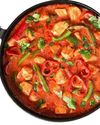Mongolia boasts a unique blend of traditions born of the country’s varied environments: the steppe, the desert, and the city. We look at three iconic practices with UNESCO Intangible Cultural Heritage status

Its winters are among Earth’s coldest, and the massive summer dust storms offer scant respite. Nothing much grows on these barren plains – but, like other desert communities, the nomads that regularly migrate through this area and across the steppe of the north have discovered the best way to cope with the lack of food and constantly shifting sands: the two-humped Bactrian camel, a hallmark of Mongolian life.
With their naturally wide soles and legendary endurance for low water, food and temperature levels, every camel is as precious as family to nomads. Apart from transport, they provide milk rich in protein and calcium, which features in steaming cups of suutei tsai, a salty local milk tea. Milk can also be made into butter and cheese – whose long shelf life is invaluable on arduous migrations far from towns and cities. In fact, Mongols need their camels so much they rarely slaughter them, preferring to dine on the meat of goats, sheep, and horses. And to add to their list of charming qualities, the fluffy ungulates are also said by herders to have the softest hearts.
But camels aren’t completely desert-proof, and females only give birth to one calf every second year (after a 13-month pregnancy) to cope with the harsh conditions. This severely limits their numbers. There is the additional risk of losing mother or baby during labour; even if both survive, the exhausted female might reject her calf, and it will die.
This story is from the {{IssueName}} edition of {{MagazineName}}.
Start your 7-day Magzter GOLD free trial to access thousands of curated premium stories, and 9,000+ magazines and newspapers.
Already a subscriber ? Sign In
This story is from the {{IssueName}} edition of {{MagazineName}}.
Start your 7-day Magzter GOLD free trial to access thousands of curated premium stories, and 9,000+ magazines and newspapers.
Already a subscriber? Sign In

A Spectrum Of Scarlet: The Symbolic Red Of Asian Flags
A common thread that unites many Asian flags is the prominent use of red, a colour rich with symbolism

Curry: A World of Flavour, Tradition, and Culture
From its humble beginnings in India, the concept of "curry" has evolved into a culinary language understood around the world

The Power Of Asian Red Fruits - Discover 10 Nutrient-Rich Gems Of The East
In the vast tapestry of Nature, Asia has gifted the world an array of unique and vibrant fruits, particularly those in shades of red. These scarlet-hued gems, packed with flavour and nutrients, not only add a burst of colour to your plate but also carry valuable health benefits. From antioxidant-rich goji berries to the exotic dragon fruit, let's explore some of the most popular red fruits from Asia and discover why they should be part of your diet.

Bhutan: A World Of Its Own
With its majestic monasteries, red-robed monks, charming rural villages, and vibrant festivals, the Kingdom of Bhutan is a Himalayan paradise that promises an enriching travel experience like no other

Take The Red Pill
From the vermilion torii gates of Japan to the famed rust-hued walls of India's Agra Fort, the burgundy robes of Burmese monks to scarlet chillies drying in the Bangladeshi sun, red is the quintessential colour of Asia.

70 Days for Our Land Animals
Raising awareness about conservation, the environment, and the land-dwelling species of the world

The Red Panda
Meet the elusive guardian of the Eastern Himalayas

Revealed Doctor Yellow
Japan Railways' special lemony Shinkansen is a rare sight to behold

The Mighty Yellow
Over 5,000 kilometres long and flowing through nine provinces and autonomous regions, the Yellow River is China's second largest, after the Yangtze, while its basin is deemed the cradle of Chinese civilisation

Wildlife Big Yellow Beauty
The popular "amelanistic" form of the Burmese python is considered among the most beautiful snakes - if that's your sort of thing